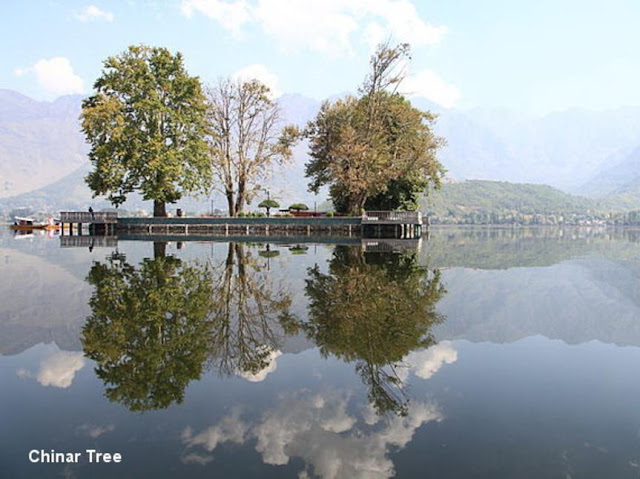SRINAGAR OLD CITY
With its almost medieval charm, the old city of Srinagar has sights, smells and sounds to enchant the most jaded traveler. Its labyrinthine roads and bustling bazaars are a photographer's delight. Traditionally dressed men and women on their way to the city's many mosques and shrines, burnt brick buildings with their rich warm colour, these are some of the old city's moods which linger in the corners of a traveler's mind, long after one leaves Kashmir.
Lending the area its vitality is the presence of the river Jhelum that flows through it. Srinagar has for long been Kashmir's most important commercial town, and when one considers that boats have always been a primary means of conveyance in Kashmir, it is not difficult to see why. In time, the city has formed around the banks of the river. Today, the presence of the river Jhelum has become an integral part of the old city, despite the fact that boats are no longer so extensively used as a means of conveyance. Nine bridges span the River Jhelum, and many, many more tiny ones intersect the network of waterways that flow through the old city.
HAZRATBAL MOSQUE
Hazratbal Mosque is located in a village of the same name on the banks of the Dal. Its pristine white marble elegance is reflected in the waters of the lake.
Hazratbal's special significance is derived from the fact that it houses a hair of the prophet Muhammad. This is displayed to the public on religious occasions, usually accompanied by fairs. Apart from these occasions, Friday prayers are offered at Hazratbal and attended by throngs of people. Hazratbal is remarkable for being the only domed mosque in Srinagar; the others having distinct pagoda like roofs. The shrine – mosque complex is situated on the western shore of the DalLake opposite Nishat Bagh and commands a grand view of the lake and the mountain beyond.
JAMA MASJID
The Jama Masjid at Nowhatta, in the heart of the old city, is the other important mosque in Srinagar at which thousands of people congregate for the Friday prayers. Of imposing proportions, the mosque is built around a courtyard and is supported by 370 wooden pillars.
The hushed quiet of the mosque counterpoints the bustle of the old bazaars surrounding it. Originally built by Sultan Sikandar in 1400 AD, and enlarged by his son, Zain-ul- Abidin, it is a typical example of Indo-Saracenic architecture. Destroyed thrice by fire and rebuilt each time, the mosque, as it now stands, was repaired during the reign of Maharaja Pratap Singh.
HARI PARBAT FORT
The Mughal emperor's fort crowns the top of Hari Parbat hill. The fort was later developed in 18th century by an Afghan governor, Ata Mohammad Khan. The hill is considered sacred to the Hindus due to the presence of temple of Sharika, which is believed to be a form of goddess Durga or Shakti. The wall around the hill was built by Akbar in 1592-98 AD. The hill is surrounded by almond orchards, which make a lovely sight during April when the trees blossom, heralding the advent of spring in Kashmir.
MARTAND TEMPLE
Martand, located atop a plateau, close to the township of Anantnag, has a temple dedicated to Surya, the "Sun God". Built by king Laitaditya Muktapida (7th to 8th century AD), it is a medieval temple with a colonnaded courtyard and the shrine in its center. The temple complex has 84 columns and offers a commanding view of the valley of Kashmir.
THE AWANTIPUR RUINS
Founded by Avantivarman who reigned Kashmir in the 9th century, this ancient township is 29 kms fromSrinagar.The site has two imposing temples, the larger one of Siva - Avantisvara is marked by huge walls, some half a mile beneath the town on the outskirts of village Jaubror. The subsidiary shrines are to the rear corner of the courtyard. The complex has, over the years, lost its grandeur and been reduced to ruins, though it is still visited by the devout. Half a mile up is Avantisvami - Vishnu, a better preserved, though smaller temple.
KHEER BHAWANI
The Goddess Ragnya Devi is symbolised as a sacred spring at Tula Mula village, 27 kms from Srinagar. Within the spring is a small marble temple. The devotees of the goddess fast and gather here on the eighth day of the full moon in the month of May when, according to belief, the goddess changes the colour of the spring's waters. The temple-spring complex is affectionately known as Kheer Bhawani because of the thousands of devotees who offer milk and 'kheer' to the sacred spring, which magically changes colours to warn of disaster.








Comments
Post a Comment